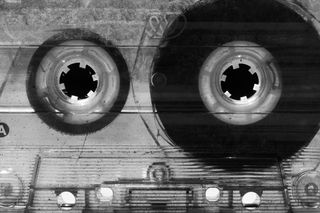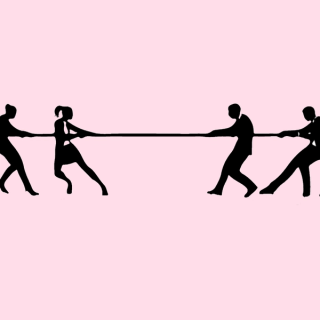
Why Do We Reminisce About the Good Old Days?
Nostalgia is a coping mechanism for dark times.

Every time I pass my school or stand in the hallways of my university, it’s as if a movie starts playing in my head — each scene from the past so clear. The smell of the first rains takes me back to my grandmother’s home instantly, and there are so many songs that I associate with individual people and the times I’ve spent with them.
Reminiscing is not unique to me. You’d be lying if you say you haven’t found yourself recalling a fond memory — say, while flipping through photographs, or passing by a place with a distinct smell, or while listening to certain songs. While reminiscing is the behavior of reflecting on your past, nostalgia is an emotion that’s remembered, explained Clay Routledge, Ph.D., associate professor of psychology at North Dakota State University, to HuffPost.
“Nostalgia is the warm, fuzzy emotion that we feel when we think about fond memories from our past,” Erica Hepper, PhD, a lecturer in the School of Psychology at the University of Surrey in England, told HuffPost. “It often feels bittersweet — mostly happy and comforting, but with a tinge of sadness that whatever we’re remembering is lost in some way.”
About 300 years ago, according to a report by ScienceABC, nostalgia was considered a mental disorder, or a symptom of depression, because it meant that a person was not capable of living fully in the present. After all, in Greek, the language the word has its roots in, nostos stands for homecoming and algo for ache.
“But those studying the phenomenon concluded that nostalgia did not come from sadness or longing but actually from a desire to reflect on happy memories of the past or an emotional era of life,” ScienceABC stated. By the end of the 20th century, nostalgia ceased to be considered a symptom of depression, but a means to resist it because it can be used as a coping strategy for dark days. Sometimes, we deliberately trigger feelings of nostalgia or try to romanticize the past by listening to familiar music, or old photos just to lift our spirits to feel good.
Also cashing in on this feel-good emotion are advertisers, especially heritage brands, who need to keep themselves alive in the current times. “When brands get old, marketers worry,” writes Prabhakar Mundkur for The Wire. “Their first instinct is to figure out how to make the brand younger,” he adds. So, they resort to ‘nostalgia marketing.’
Think biscuit brand Parle-G’s 2018 campaign titled “You’re My Parle-G.” In it, protagonists in their 20s talked to their loved ones about how the biscuit played an important role in their childhood. Or RoohAfza, a beverage brand also popularly known as the ‘drink of India,’ and its campaign #GhulkeJiyo, which uses the song “Yeh Hai Bombay Meri Jaan” from the 1956 film CID as a background score for a series of montages depicting childhood and different phases of life.
“Brands periodically try to stave off the effects of aging through marketing and advertising tactics,” writes Mundkur. “Old brands also trigger nostalgia and stimulate the inner recesses of our memory. They make associations with places, people and moments that have a special place in our minds. They remain relevant.”
Related on The Swaddle:
Why Childhood Memories Are Vivid for Some, Hazy for Others
And who doesn’t want a warm fuzzy feeling once in a while? According to Hepper and Routledge, people wax nostalgic at least once a week on average, spurred on by any external stimuli. It could be a familiar smell, music or old photograph. Smells trigger nostalgia faster than anything else, because the olfactory lobe, the part of the brain that processes odor, is directly connected to the limbic system, that is, the control center for emotions, according to Dr. Heidi Moawad, a neurologist.
Nostalgia even changes the physiology of the body, with the temperature of the body rising every time we feel a longing for the past. That should explain the feeling of warm fuzzies.
A marketing survey also revealed that young adults, surprisingly, experience nostalgia more frequently than older adults, while Hepper and Routledge attribute to this the major life changes they are experiencing such as leaving home for college or getting married. The survey also states that nostalgia is also common in adults over 50 years of age. This might be because they often find themselves looking back and reflecting on their lives, say the duo.
But it’s not a bad thing. The emotion can actually help reduce stress and increase one’s level of hope and optimism, Routledge says.
It may also help strengthen your sense of personal identity. “Remembering how you experienced unconditional love as a child, for example, can be reassuring during difficult times,” says Krystine Batcho, PhD, professor of psychology at Le Moyne College in New York. Nostalgia can also make people feel less anxious. “The sense of continuity from connecting to the past can have a grounding effect, helping to ease stress,” she adds.
But the flip side, says Moawad, is that when it’s so easy to get nostalgic, it may raise the possibility to get addicted to the pleasure it gives us. “Nostalgia can be used excessively as a crutch and the positive feelings of nostalgia may serve as a substitute for living in the present-day if current, real-life troubles take more effort than a person can tolerate.”
We know, we know — it may be as difficult as it sounds, but staying on the right side of the past may probably be the best way to make nostalgia a feeling we enjoy.
Anubhuti Matta is an associate editor with The Swaddle. When not at work, she's busy pursuing kathak, reading books on and by women in the Middle East or making dresses out of Indian prints.
Related


What Causes Our Minds to Zone Out?
